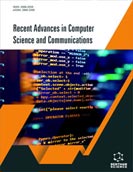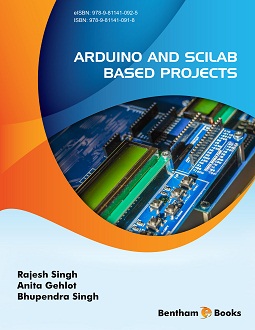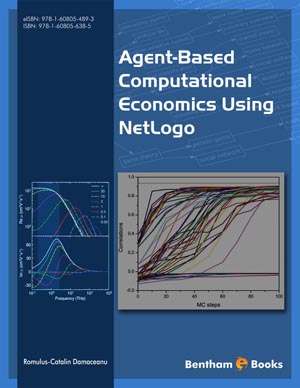Preface
Page: ii-iii (2)
Author: Mohamed Sarrab, Hafedh Al-Shihi and Naveen Safia
DOI: 10.2174/9789814998246121010002
Dedication
Page: iv-iv (1)
Author: Mohamed Sarrab, Hafedh Al-Shihi and Naveen Safia
DOI: 10.2174/9789814998246121010003
Capability: Can Mobile Application Perform Valuable Functions?
Page: 1-11 (11)
Author: Mohamed Sarrab, Hafedh Al-Shihi and Naveen Safia
DOI: 10.2174/9789814998246121010004
PDF Price: $15
Abstract
This chapter discusses the capability of a mobile application as one of the main qualitative characteristics. The chapter focuses on the completeness of the mobile application and the availability of all important functions. The features of accuracy and the efficiency of performance in mobile applications are explored and discussed. This chapter focuses on the best way in which the different features interact with each other and discusses the ability to perform multiple parallel tasks at the same time. Besides, this chapter pays emphasis to the support provided to all possible data formats. Finally, it discusses the ability to add features or change the current behavior of the application.
Reliability: Can a Mobile Application be Trusted in Many and Difficult Situations?
Page: 12-20 (9)
Author: Mohamed Sarrab, Hafedh Al-Shihi and Naveen Safia
DOI: 10.2174/9789814998246121010005
PDF Price: $15
Abstract
This chapter discusses the reliability of a mobile application as one of the main quality attributes. This chapter considers the stability of a mobile application in terms of providing a mobile application without errors in the script or unhandled exceptions, or any other types of crashes. The focus is on the ability of a mobile application to discover, adapt, prevent, and recover from any mobile operational issues. This chapter emphasizes the possibility of the mobile operation to recover after any fatal mistake and continue to use the same mobile application even after a serious problem. Besides, it focuses on data integrity and discusses different behavioral issues of the application, such as predictability, consistency, and trustworthiness.
Usability: Can Mobile Applications Be Used Easily?
Page: 21-38 (18)
Author: Mohamed Sarrab, Hafedh Al-Shihi and Naveen Safia
DOI: 10.2174/9789814998246121010006
PDF Price: $15
Abstract
This chapter discusses the usability of a mobile application as one of the main qualitative attributes. The chapter focuses on the users’ expectations about usability and the redundancy of content or appearance of the product. It discusses how fast and easy it to learn the use of the mobile application is by memorizing what has been learned from the application. Moreover, it emphasizes the application's capabilities to recover the required information. It discusses how experienced mobile users can perform common tasks very fast and the possibilities of interacting with other applications. This chapter emphasizes protection against making mistakes and meeting the accessibility standards, which apply to the mobile application.
Charisma: Do Mobile Applications have Charisma?
Page: 39-48 (10)
Author: Mohamed Sarrab, Hafedh Al-Shihi and Naveen Safia
DOI: 10.2174/9789814998246121010007
PDF Price: $15
Abstract
This chapter focuses on the charisma of a mobile application as one of the main qualitative characteristics. The chapter begins with the uniqueness of the mobile application and explores user satisfaction while using the mobile application. This chapter discusses the professionalism displayed by the application and mainly emphasizes the best features of the mobile application that can attract users. It also discusses the curiosity feature and focuses on the entrancement of mobile applications. The chapter considers the hype of mobile applications and discusses the expectancy and attitude of mobile applications.
Security: Does Mobile Application Protect Against Unwanted Usage?
Page: 49-57 (9)
Author: Mohamed Sarrab, Hafedh Al-Shihi and Naveen Safia
DOI: 10.2174/9789814998246121010008
PDF Price: $15
Abstract
This chapter focuses on the security of a mobile application as one of the main qualitative characteristics. The chapter emphasizes the authentication process in the mobile application and explores the authorization mechanism used for a mobile application. It also discusses the users' and applications' information privacy and mainly focuses on mobile application security holes. Finally, it discusses the potential risks of how the personal information of users is treated.
Performance: Is the Mobile Application Fast Enough?
Page: 58-67 (10)
Author: Mohamed Sarrab, Hafedh Al-Shihi and Naveen Safia
DOI: 10.2174/9789814998246121010009
PDF Price: $15
Abstract
This chapter discusses performance as one of the main qualitative characteristics of a mobile application. It focuses on the limitations of mobile applications in different circumstances. This chapter explores appropriate usage of memory and storage and emphasizes the speed of performing any task or action. It discusses the application availability when needed and mainly focuses on the ability of the application to process many tasks. Besides, it explores how the application can deal with the long-time loading and focuses on the appropriateness of application feedback. Finally, this chapter explores how an application can scale up, scale down, or scale-out.
Mobility: Is the Application Easy to Install, Maintain and Support?
Page: 68-78 (11)
Author: Mohamed Sarrab, Hafedh Al-Shihi and Naveen Safia
DOI: 10.2174/9789814998246121010010
PDF Price: $15
Abstract
This chapter discusses the mobi-bility of mobile applications as one of the main qualitative characteristics. It focuses on the requirements of the application to determine the types of mobile devices to support, considering the different features of the devices such as performance of the processor in terms of speed, the capacity of memory and storage, screen resolution and screen size, and availability of suitable environment for the tool development. This chapter explores the installability of the mobile application and emphasizes how mobile applications can be upgraded. It mainly focuses on the uninstallation of mobile applications and their configuration by focusing on deployability and the most important factors to provide maintenance. Finally, the chapter ends by exploring the testability of mobile applications.
Compatibility: How does Mobile Application Interacts with Environments?
Page: 79-90 (12)
Author: Mohamed Sarrab, Hafedh Al-Shihi and Naveen Safia
DOI: 10.2174/9789814998246121010011
PDF Price: $15
Abstract
This chapter discusses mobile application compatibility as one of the main quality characteristics. This chapter explores mobile operating system compatibility and discusses how a mobile application can be compatible. It mainly focuses on the most suitable application to blend within environment configuration. It also discusses the backward and forward compatibilities and focuses on the sustainability of the application. Finally, the chapter discusses conforming standards of the application.
Appendix
Page: 91-97 (7)
Author: Mohamed Sarrab, Hafedh Al-Shihi and Naveen Safia
DOI: 10.2174/9789814998246121010012
Subject Index
Page: 98-102 (5)
Author: Mohamed Sarrab, Hafedh Al-Shihi and Naveen Safia
DOI: 10.2174/9789814998246121010013
Introduction
This handbook is a concise yet complete guide to fundamental engineering requirements and quality characteristics that users, developers, and marketers of mobile applications should be aware of. It provides detailed definitions and descriptions of eight key software application features that are integral to the overall design and user experience goals, and which may often overlap with certain functionalities. The book explains the essential aspects of these features clearly to novice developers. Readers will also learn about how to optimize the listed features to tailor their applications to the needs of their users. </P> Key Features: </P> - Presents detailed information about eight different features which guide mobile application development: capability, reliability, usability, charisma, security, performance, mobility and compatibility </P> - Reader-friendly, structured layout of each chapter including relevant illustrations and clear language, designed for quick learning </P> - Focus on both software function and user perception of applications on mobile devices </P> - Includes a handy appendix with information about mobile learning projects and related work packages </P> Handbook of Mobile Application Development: A Guide to Selecting the Right Engineering and Quality Features is the ideal learning tool for novice software developers, computer science students, IT enthusiasts and marketers who want to design or develop mobile apps for an optimal user experience.






















